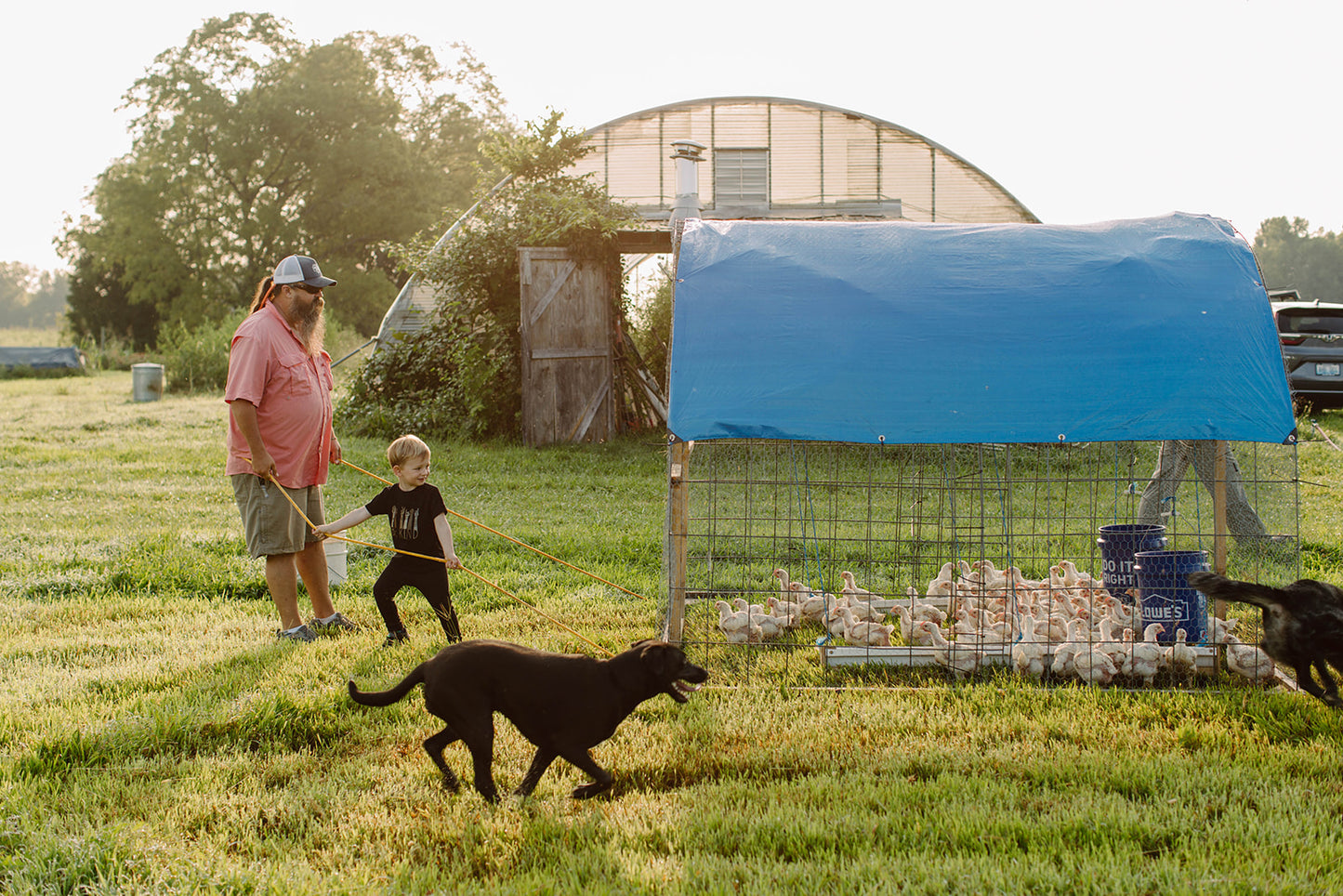
Why Chicken Raised with Love Costs More. Most of us are aware of the many benefits of eating pasture-raised chicken. And we want to purchase chicken that spent its life in a healthy, happy setting- as opposed to the kind of tortured existence mass-produced poultry endure. However, chicken from industrial feeder farms continues to find its way onto our tables. Why? In a word: money. Pasture-fed, humanely raised chicken costs more than factory-farmed poultry. The price difference can be so great, sometimes consumers choose the mass-produced birds even though they know this chicken is less healthy.
So, why does chicken raised with love cost so much more than industrially produced poultry?
Raising chickens with love takes longer. It takes longer to raise birds on a healthy, pasture-based diet than it does to raise them on chemically enhanced factory feed. The mass production of poultry is a relatively recent phenomenon in farming. In the 1970s, a vertically aligned, corporate-managed chicken production model became the chief way poultry was produced. Today, mass-produced chickens are nearly double the average size of a broiler bird from 50 years ago– and they are ready to be processed in roughly half the time. Commercially produced chickens are fed a grain blend infused with growth hormones and chemicals designed for rapid weight gain. These birds are ready to be processed in roughly two months. But their meat has higher fat content than pasture-raised birds. Chickens raised on a blend of pasture and grain gain weight more slowly, but the meat has a higher protein percentage. The birds spend their day foraging for tender shoots, bugs, and worms. Their grain is free from hormones and chemicals. Due to the varied diet the birds enjoy, the meat contains more essential vitamins and nutrients. In short, the meat from pastured birds is just better for you. However, to achieve the quality and flavor pastured poultry enjoys, it takes double the time for these chickens to reach processing size – and it costs the farmer double to raise these birds than if they were raised in a factory shed.
Chickens raised with love need more space. Healthy chickens need much more space to thrive than they are given in industrial production operations. On factory farms, tens of thousands of birds are kept crammed together in windowless sheds for the entirety of their lives. To mitigate the rampant disease brought on by overcrowding, birds receive a constant dose of antibiotics – leading many to worry that the use of these antibiotics is creating antibiotic-resistant “super-bugs” that can infect humans. At roughly six weeks of age, the birds are harvested, their waste is scraped out of the sheds and into toxic waste pools, and the process starts over. Pasture-raised birds do not receive these sub-therapeutic antibiotics. They enjoy living much of their time outdoors and in pens large enough to allow them to spread out. Their runs are rotated throughout the pasture- the droppings fertilize the soil and improve the land. Although this model is certainly healthier for the birds– and us– it requires more space per bird, which increases costs for the farmer.
It costs the farmer more to raise chickens with love. But, the expense is worth it. The dangers of mass-producing poultry are becoming more prevalent. Consumers have significant power to generate change in these production methods. Purchasing pasture-raised, locally-grown chicken is better for you, your family, and our farms.
Check out our farm raised Chicken here.
